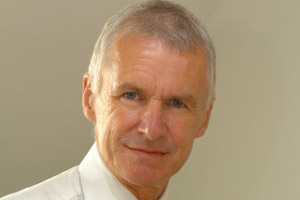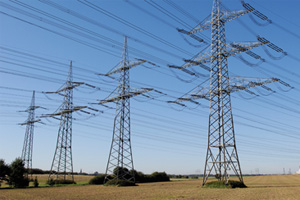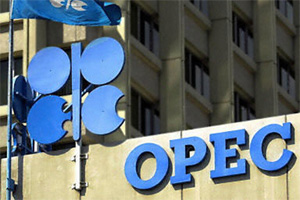EU gets ready for a new energy strategy
on
EU gets ready for a new energy strategy
The European Union is shaping a new energy strategy for 2011-2020 against the backdrop of the global economic crisis and difficult climate change negotiations. The European Commission warns that ‘the uncertainty created by the crisis puts the brakes on many critical energy projects and risks slowing down energy technology development.’ In response to these new challenges, the Commission has now issued a strategic document that will be discussed with stakeholders and within the European institutions. Once the details of this new strategy are agreed upon, it will shape all the EU’s legislative work in the energy sector until 2020.
 |
| The EU's Director-General for energy Philip Lowe |
So what does the Commission regard as the major priorities of the new strategy? There are four broad issues it wants to tackle: completing the internal energy market by implementing existing legislation, developing new infrastructure, fostering the development of low-carbon technologies and pursuing dialogue with the major global energy players outside the EU. We will discuss each of these areas below.
1. Implementing legislation
As Philip Lowe, Director-General for Energy – the highest ranking civil servant under commissioner Günther Oettinger – says in a video interview with the internet-forum Vieuws and European Energy Review, the internal market is still far from complete. The main problem is that EU law has not been adequately implemented yet in many EU countries. This not only applies to the third directives for electricity and gas, which were adopted last year, but also to the second directives, which date back to 2003.
The Commission notes that ‘proper implementation of already adopted legislation, including the 2nd and 3rd internal energy market package, is essential to ensure that the market provides the right price signals for investments’.
In addition to the 2nd and 3rd package, which deal with the internal market, the EU has also adopted a climate package, including policies on renewable energy, energy efficiency and the Strategic Energy Technology Plan. These must be implemented too, notes the Commission, to achieve the ambitious 20-20-20 targets for 2020. It says that ‘further steps’ are needed to achieve a low-carbon economy, but these ‘will not be credible or effective if the existing legislation and programmes are not fully implemented’.
According to Lowe, ‘a few dozen infringement proceedings for non-compliance with EU law will be launched soon’ by the Commission. At the same time, he says, we ‘will continue to assist member states, where appropriate, in implementing the measures needed to complete the internal energy market’.
2. New infrastructure
A key focus of EU energy policy in the coming years will be infrastructures. By 2020, notes the Commission, it is essential that the EU has networks that:
- ‘form the backbone of a fully integrated European internal energy market enabling gas and
electricity to flow between Member States without bottlenecks’ - ‘link Europe to diversified supply sources in third countries’
- ‘allow renewable energy production, off-shore and on-shore, to feed into the European
supply system’ - ‘are smart, i.e. allow actions of generators and consumers to be integrated intelligently in order to efficiently deliver sustainable, economic and secure energy supplies’
Brussels has already given a €2 billion boost recently to a few dozen gas and electricity interconnection projects in Europe through its economic recovery package. But the Commission realises that much more is needed. It intends to present its master plan on this point, the Energy Infrastructure Package, by the end of 2010. This will be based on the TEN-E Implementation Report adopted on 4 May 2010. The Package ‘will adress the shortcomings of the TEN-E framework’, says the Commission. In particular the networks must become more ‘Europe-wide’ and ‘more flexible’.
 |
| Energy infrastructure is a key focus area of the energy policy of the EU |
The Commission will further examine how to speed up authorisation procedures given that local communities are often resistant to energy infrastructure in their neighbourhood. So far, it has always failed in its efforts to do this. It also wants to increase coordination between EU member states to develop key infrastructure projects of European interest.
With regard to financing, the Commission notes that ‘network investments should in future continue to be financed mainly from tarifss paid by the users’ – an important issue for investors. Nevertheless, it adds that not all infrastructure investments can be delivered by the market alone. The taxpayers will have to pay their share as well.
3. Low-carbon energy system
After having launched its climate targets for 2020, the Commission is now studying energy scenarios to move towards a low carbon future by 2050. But this does not mean that it will not take action anymore on the 2020 targets. Quite the contrary. According to the Commission, there is still much to be done to achieve these objectives. The aim of achieving 20% energy savings by 2020 is an indicative overall target. ‘There are no individual targets on Member States’, the Commission notes. Hence, it has now entered into a dialogue with Member States on how to determine national targets.
The goal of reaching 20% energy savings by 2020 is also by no means reached yet. ‘Preliminary results of the ongoing evaluation of the Energy Efficiency Action Plan show that there still is progress to be made in areas such as energy supply and transformation and the role of utilities, transportation, establishment of a well functioning market for energy services.’ In addition, current legislation on the energy performance of buildings should be ‘reinforced’ and include existing buildings, Lowe tells EER. The review of energy efficiency policy will also look at possible sources of financing, including both existing and new EU instruments.
Electricity supply will be a key area in which the production and use of carbon-free energy can be increased since there is an urgent need to replace what is an ageing power generation capacity. The Commission notes that, ‘if strategic investment decisions are taken rapidly, nearly two thirds of European electricity generation could be low-carbon in the early 2020s from the current level of 44%’. This would mean a massive expansion of the use of renewable energy, nuclear power and coal-fired plants with carbon capture and storage (CCS).
One strand of the EU’s strategy will be about developing the right incentives, such as carbon price signals through the Emission Trading Scheme (ETS) and energy taxes. The Commission also wants to develop the right framework to boost nuclear investments. In another strand, the EU will fulfil its low carbon technology roadmap called SET (the European Strategic Energy Technology plan). This includes industrial initiatives on wind power, solar power, smart grids, CCS, biofuels, nuclear fission and ‘smart cities’. Each sector will develop its own technology roadmap for the period from 2010 to 2020, including concrete action plans to develop technologies and improve their competitiveness. Their financing requirements are estimated to come to €50bn, but the EU has yet to agree to support the SET plan financially.
Overall, the Commission estimates that energy technology investment requires €80bn up to 2020, but this amount could increase to €1 trillion in the next twenty years if Europe wants to keep energy flowing while switching to low carbon energy to meet its climate change and energy goals. The ETS is seen as a potential funding resource for R&D on low-carbon technologies.
4. Coordinated external energy policy
In the last few years, the EU has put a lot of emphasis on developing bilateral dialogues and closer cooperation with a number of countries and organisations: the Western Balkans (via the Energy Community Treaty); Central Asia; Iraq and the Middle East; China; Russia; Brazil; the US; the African Union; the International Energy Forum; the International Energy Agency and OPEC. Various European initiatives such as the Energy Community (in the Balkans) and its Mediterranean policy have meant that the EU’s energy market rules are also applied outside Europe. The idea is to integrate these neighbouring markets more closely with Europe’s markets.
 |
| The Commission wants to intensify the dialogue with other stakeholders in the EU energy market, amongst others with Vienna based OPEC. |
The climate change agenda has also made its way into bilateral energy dialogues. The Commission now wants the EU to ‘enhance its influence in the global debate on the use of the Earth’s limited natural energy resources and their environmental impact’. The Commission is therefore proposing to launch ‘trade-opening initiatives’ for sectors such as sustainable products and technologies as well as international cooperation on standardisation for low carbon technologies.
At their last meeting in Brussels on May 31, EU energy ministers invited the Commission to submit a comprehensive analysis of the external dimension of the EU’s energy policy. They argued that, ‘to be successful, the European energy policy should make full use of the synergies between its internal and external dimensions’.
Economic and social benefits
In conclusion, the Commission notes that ‘short term effects of the economic crisis cannot reduce Europe’s determination to improve the sustainability of our energy consumption and reduce the amount of energy needed and emissions generated per unit of output.’ But it does add that, compared to the previous Action Plan, a ‘greater emphasis is needed on investments. Billions of euros will need to be invested in new technologies, infrastructure, energy efficiency improvements, low-carbon power generation and public education and skills to make the low-carbon transformation happen’. It will be huge challenge to find this money and at the same time keep energy affordable for industry and households.
But the Commission ends on a positive note. ‘In today's globalised world’, it notes, ‘the economic and social benefits of achieving the 2020 goals are significant. This could result in €60 billion less in oil and gas imports by 2020. This represents not only financial savings; it is also essential for our energy security. Further progress with the integration of the European energy market can add an extra 0.6% to 0.8 % GDP. Meeting the EU’s objective of 20% of renewable sources of energy alone has the potential to create more than 600,000 jobs in the EU. Adding the 20% target on energy savings, it is well over 1 million new jobs that are at stake.’
Of course you may disagree with this last optimistic note or with some of the other strategic plans of the Commission. In that case, let us know – or better still, write directly to the Commission and send us a copy of your comment. We will try to keep track of what Brussels does with it.


Discussion (0 comments)